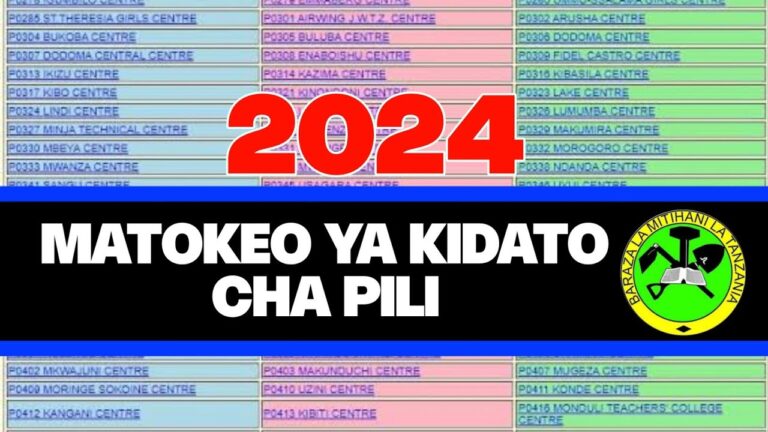The 2024 NECTA Form Two Results National Assessment results have generated significant attention among students, parents, and educators across Tanzania. Every year, this examination plays a crucial role in assessing students’ understanding of core subjects and determining their readiness to advance to Form Three. This article provides a comprehensive look at the 2024 results, key insights, and advice for students moving forward.
Understanding the 2024 NECTA Form Two Results
The Form Two National Assessment (FTNA) is conducted by the National Examinations Council of Tanzania (NECTA) to evaluate students after two years of secondary education. It covers essential subjects such as Kiswahili, English, mathematics, sciences, social studies, and civics. The assessment is designed to measure not only memorization but also understanding, analytical thinking, and problem-solving skills.
The results of the FTNA indicate how well students have grasped the foundational knowledge necessary for higher secondary education. They also provide schools and educators with valuable feedback on teaching effectiveness.
Highlights of the 2024 NECTA Form Two Results
The 2024 results revealed several interesting trends. Many schools reported excellent performance, with numerous students achieving top divisions, demonstrating both dedication and effective preparation. Some regions showed challenges, highlighting disparities in educational resources and support. Despite these differences, the results as a whole reflect the continued progress of secondary education in Tanzania.
Checking Your Results Of 2024 NECTA Form Two Results
Students can access their 2024 Necta Form Two results through their schools, which receive official NECTA reports. Each student’s performance is displayed as grades for individual subjects and an overall division ranking. These divisions range from Division I, indicating excellent performance, to Division IV, reflecting areas where improvement is needed.
It is important for students to carefully review their results, understanding both strengths and weaknesses. Doing so will help in making informed decisions about subject choices and study plans for Form Three.
Interpreting the Results
Division I – Represents top performance, showing strong understanding across subjects. Students in this category are well-prepared for advanced studies.
Division II – Indicates above-average performance with minor areas needing improvement. Students should focus on these weaker subjects to excel further.
Division III – Suggests satisfactory performance, with significant gaps in knowledge. Additional study and support will be crucial for academic success.
Division IV – Reflects poor performance in several areas, requiring immediate attention, tutoring, and extra practice.
Common Trends Observed
Students generally performed well in language subjects, particularly Kiswahili, indicating strong communication skills.
Mathematics and sciences remained challenging for some, highlighting the need for extra focus on problem-solving techniques.
Performance varied significantly between urban and rural schools, emphasizing the impact of access to educational resources and support.
Guidance for Students
Receiving your results can be both exciting and overwhelming. Here are some practical steps for students moving forward:
Celebrate achievements: Recognize and reward your hard work if you performed well.
Identify weak areas: Review subjects with lower grades and focus on improvement.
Plan for Form Three: Choose subjects carefully based on your strengths and interests.
Seek support: Consult teachers, tutors, or study groups for help in challenging subjects.
Stay positive: A low grade is not the end; it is a chance to learn and improve.
Importance for Parents and Educators
The results provide parents with insight into their child’s academic progress and areas needing support. Parents are encouraged to guide and motivate their children, ensuring they understand the importance of consistent study and effort. Educators can use the results to identify trends, adjust teaching strategies, and provide targeted assistance where it is most needed.
Conclusion
The 2024 NECTA Form Two results are more than just numbers; they reflect students’ understanding, effort, and potential for future academic growth. By carefully reviewing these results, students, parents, and educators can take meaningful steps to ensure continued success in Form Three and beyond. Success in education is not only about past performance but also about planning, perseverance, and determination for the future.


